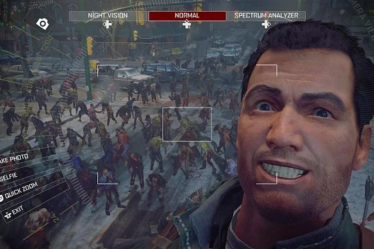
This article has been published in Italian on IGN Italy the 8th of September 2021. You can read it here.
Just a few weeks ago, I offered you a preview sharing my initial impressions of Tales of Arise, a project born from Bandai Namco’s desire to revitalize its flagship JRPG series, which has been accompanying the journey of Japanese gaming consoles since the mid-’90s.
Tales of Arise bears the heavy responsibility of wiping the slate clean of recent Tales of productions, a series of real-time combat RPGs that, during the transition from PS3 to PS4, struggled with technical frameworks not up to par with its noble lineage.
While the recent entries offered gameplay in line with expectations and a cast of protagonists that was fairly memorable, they suffered from production times and budget constraints that affected their technical profile, detracting from the good work done on the artistic front. It’s worth noting that all the episodes released on PlayStation 4 were ports of games initially released in Japan for PlayStation 3.
The series’ fatigue became apparent when shortly after the release of Tales of Zestiria, the historic architect of the series, Hideo Baba, left Bandai Namco’s offices, temporarily entrusting the fate of the franchise to the more than competent Yasuhiro Fukaya, a key figure who enabled the birth of the recent (and highly acclaimed) Tales of Berseria.
After spending over seventy hours with its protagonists traversing the five realms of Dahna and engaging in countless battles against formidable monsters, I can finally speak to how the new direction initiated by Yusuke Tomizawa’s promotion to producer, already known for the God Eater series, has sparked a revolution from which, hopefully, there will be no turning back.
The story of Tales of Arise revolves around the saga of Alphen and Shionne, two protagonists who, despite coming from different and conflicting worlds, conclude that the only way to advance their battle against the system is to join forces. Immersed in a fantasy world rife with mysteries and dominated by injustices, the two are soon joined and ultimately accompanied by a colorful group of adventurers who share their ideals, despite coming from very different backgrounds, which find a way to be thoroughly explored in detail during their journey.
I must admit that the story of Tales of Arise surprised me. Despite integrating many themes and clichés of this narrative genre, clearly aimed at a young and passionate audience, it manages to provide multiple points of reflection on topics that initially seem to be introduced solely as aesthetic embellishments, for an adventure with merely epic undertones. The conflict between the civilizations of Dahna and Rena stages unexpected situations, bringing various themes to the discussion table in an extremely intriguing manner. The values of the protagonists, on the other hand, are often reevaluated in light of the experiences they end up living, and they bear the marks of events that can only change them. The very idea of slavery, initially depicted in the most basic way possible through labor camps and imprisonment, is then reconsidered from different points of view, some extremely curious. Is it better to survive without affecting the status quo or to risk one’s own life and that of others in an attempt to ignite the spark of revolution? And if one were to realize they are slaves to an ideal? To what extent is it possible to go to achieve it? How much are you willing to sacrifice in the process? Is it really possible to bridge the gap between civilizations in conflict for centuries with a decisive action? And what will be the future of a society turned upside down?
These are reflections that can only be answered as the adventure progresses, and to which the protagonists themselves often find divergent answers. In reality, beneath the surface of a classic story with clear power-fantasy tones, distinctly adolescent, and where it’s easy to recognize all the typical stereotypes of Japanese animation so beloved by the series, there are details and elements that reveal almost unexpectedly mature traits, with developments that frankly surprised me.
In some ways, it could be said that the tone of Tales of Arise’s story is generally more mature than recent chapters of the series, but the reality is that it manages to maintain a good balance between the main narrative and lighter interludes. What further enhances the script’s effort is the pace of the narrative, which for once performs much of its task without being plagued by downtime or weaker minor narrative arcs, a criticism that I would extend to previous iterations of this franchise, including the most beloved ones.
Moreover, it would be simplistic to say that the game in question follows the tracks of classic JRPGs where a group of adventurers is carried away by rich twists and turns, matures in the process, and ultimately saves the world because there is much more to discover. Its characters, all finely characterized, are thoroughly investigated through skits, optional scenes typical of the series, in which much of the character development is focused.
These dialogues, accessible on-screen when certain actions are taken during the story, allow an interesting, varied, and at times very charismatic group of heroes to voice their dreams, fears, and hopes for the future. The relationships that bind them can be further explored in nightly conversations around the campfire when stopping during the journey at one of the many rest areas dedicated to the cooking mechanic. In Tales of Arise, every purely ludic mechanic (such as simply picking up an item on the map) is actually entangled in pretexts that allow the protagonists to continually come to life: stopping to catch one’s breath and recover precious healing points is also an opportunity to strengthen one’s party with delicacies or temporary bonuses, but above all, a way to discover further details about the protagonists, or simply to see them interact in more intimate situations (and still be rewarded with explosive techniques to unleash in combat).
The lack of a world map is certainly not felt when the level design is so well-structured: each of Dahna’s realms is characterized by finely detailed scenarios in which the protagonists can move freely among heights, rugged paths, multi-level mazes, and hidden caves with treasures awaiting adventurous players. There is much to discover in the universe of Tales of Arise, from collectibles to unlockable aesthetic elements, ingredients to gather, and chests to uncover, but naturally, one couldn’t talk about a Tales of episode without mentioning its combat system, the true flagship of the Bandai Namco saga.
It is necessary to dwell on this theme for a moment, especially in light of the upheavals it has undergone, deviating extremely radically from the recent examples of Tales of Zestiria and Tales of Berseria. In Arise, players who come into contact with visible enemies on the map are transported to an arena and are called to familiarize themselves with entirely new mechanics for the series. On one hand, the use of healing techniques has been extremely limited, delegated to the exhaustion of an indicator common to all characters, namely the aforementioned healing points. On the other hand, even offensive techniques require not only a certain degree of skill and reflexes but also a strategic use of the unique abilities of the protagonists, all conveniently “exchangeable” at any time between bench heroes and the four engaged in combat. This is a revolution never seen before in the series but somewhat reminiscent of the mechanics that rewarded more virtuous players in the battles of Tales of Graces F for PlayStation 3. In essence, you can strike against enemies with a limited number of offensive attacks assigned to the right shoulder button, while the adjacent trigger is dedicated to evasive maneuvers. It’s possible to jump and launch into aerial combos from the beginning of the adventure, but clearly, most of the techniques useful for combos (the classic “arts” of the series) can only be learned later.
Initially, the impression is that you’re dealing with enemies seemingly insensitive to your attacks, true “sponges” of health points, but simply continuing with the adventure and recruiting a few more party members will evolve into an extremely frenetic and highly rewarding combat system before your eyes. Breaking through enemy defenses with penetrating attacks allows you to knock down opponents and inflict more damage, while judicious use of the pyrotechnic boost attacks they’re subject to is crucial to render enemies defenseless and then “juggle” them in the air as in any Tekken battle. The limited number of arts initially executable in a combo can be easily extended both with last-minute dodges (complete with dramatic slow motion) and with the use of the aforementioned boost attacks; well-trained reflexes will be more than necessary to avoid otherwise lethal enemy offensives and earn the opportunity to land well-aimed counterattacks.
To this, of course, must be added both the great variety (and depth) of combat styles of the controllable characters and the obvious superstructure of elemental weaknesses and status ailments typical of JRPGs. This combination of mechanics may seem overwhelming in words, but it proves to be extremely agile in practice, unfolding and adding novelties to every narrative arc, and thus allowing players to become familiar with each new feature very naturally. Moreover, it is also possible to act on the artificial intelligence that controls the travel companions in the convenient strategy menu, where in a rich screen that seems to mimic the much-appreciated Gambit system of Final Fantasy XII, it is possible to issue commands both to the group and to individual companions, to the point where, if desired, battles could be made entirely AI-controlled. And if they don’t respond with the necessary effectiveness, just act on the menu callable during the skirmishes or even take manual control by changing the hero used.
Chaining series of battles in quick succession, or simply raising the difficulty level from the options menu, also allows you to bet on your skill to be rewarded with a greater number of experience points and rare materials to be used in the development of new weapons and accessories, the latter customizable and upgradeable depending on the raw materials at your disposal. The skill points received at the end of a battle can be invested in expandable skill trees through “titles”. These are unlocked both as the adventure progresses and by completing side missions (clearly indicated on screen), or by engaging in extra activities such as cooking and fishing. Needless to say, unlocking them all, along with the associated combat techniques, is fundamentally an additional side mission, which without requiring the use of guides still makes it very clear to the player how to move and what to do to continue evolving their party in the pursuit of the coveted level 100 (and accompanying trophy).
Finally, it is impossible not to reserve a note of praise for the extreme rejuvenation work carried out by the artistic staff of Bandai Namco: Tales of has never looked so beautiful and satisfying to see, beyond the always appreciated animated sequences produced by the animation studio Ufotable (Demon Slayer, Fate/Zero). Despite some easily noticeable technical flaws, such as the notorious pop-up phenomenon of graphic elements and NPCs already reported in the playable demo available on PlayStation and Xbox stores, the world of Dahna and its inhabitants move in detailed and fascinating environments, where on the horizon you can admire breathtaking landscapes in continuous mutation thanks to a day/night cycle that embraces all its locations. Great care has been taken in outlining each realm with its environmental peculiarities, and finally, everything has been embellished with a filter that makes everything look like watercolor illustrations.
The decision to entrust character design and artistic direction to a single person (previously done by different people) has allowed the latest effort from Bandai Namco to enjoy greater stylistic coherence between characters and environments, including the many NPCs that inhabit that world. The style chosen to characterize the supporting characters, evidently portrayed with a more mature face and physique than usual, must not alienate fans: the DNA of the series is stronger than ever in all their interactions, and even if the skits are no longer illustrated with two-dimensional animations, I can assure you that the characteristic jovial (and sometimes even irritating, why not) spirit is still the same.
Moreover, the overall quality of character modeling, expressiveness, and animation is light years away from that of the previous chapter, Tales of Berseria, finally allowing the JRPG series from the Tekken house to compare itself with contemporary productions, while remaining a game in Unreal Engine 4 clearly designed for last-generation consoles. I wonder what they will have in store for us with the next chapter, hopefully tailored around the possibilities of Xbox Series and PS5. In this regard, the PlayStation 5 version that I was able to appreciate in its entirety allows you to choose between an option at 60fps and one in actual 4K resolution, but between the two, I can only recommend giving greater importance to the fluidity of the action, especially considering the goodness of the combat system that the game can boast: the FPS counter is too compromised by the Ultra HD resolution.
The performance of the veteran Motoi Sakuraba on the soundtrack, on the other hand, proves to be appreciable in the perspective of a celebration of the brand, but given the intentions declared by the developers to revitalize the series, I would have preferred to entrust the task to Go Shiina, already a composer of other Bandai Namco titles and particularly appreciated for his compositions in Tales of Zestiria and especially Tales of Legendia. In short, everything is good, but without surprises. The voice acting is excellent, however, available in both English and Japanese, while the Italian translation of the texts – as usual for Bandai Namco – seems to be based solely on the English script, with assorted linguistic liberties that certainly won’t disappoint the less Japanophile.
I downloaded Tales of Arise from the PlayStation Store thanks to a review code provided by the publisher and completed the game in over 70 hours, earning the platinum trophy. I played on a PlayStation 5 connected to a 55” LG OLED C7 TV. The download weighs 37.30 GB, and the game, available also for Xbox One, PS4, Xbox Series, and PC, has been translated for the occasion into all European languages, including Italian. I completed it by selecting the Italian adaptation, out of curiosity, I checked the English one, and finally, I dedicated myself to the post-game challenges realizing that one gaming session leads to another.
It is undoubtedly evident that we are facing the result of a work in which Bandai Namco has tried to give its best, also enjoying extended times and delays due to the COVID-19 emergency. Tales of Arise is a JRPG literally packed with content, side activities, unlockable costumes, and assorted extra activities. There is so much to do and get lost in, even after completing the adventure when the game surprises with additional challenges and a New Game + to delve into (with welcome returns attached). If the Tales of series has always intrigued you, this is definitely the time to dive headlong into it, no matter what gaming platform you have available, while veterans of the saga can finally enjoy a chapter as revolutionary as it is familiar and clearly refined without falling victim to cuts and production compromises. If this is truly the new course of the Bandai Namco series, we can only look to the future with a certain optimism.


